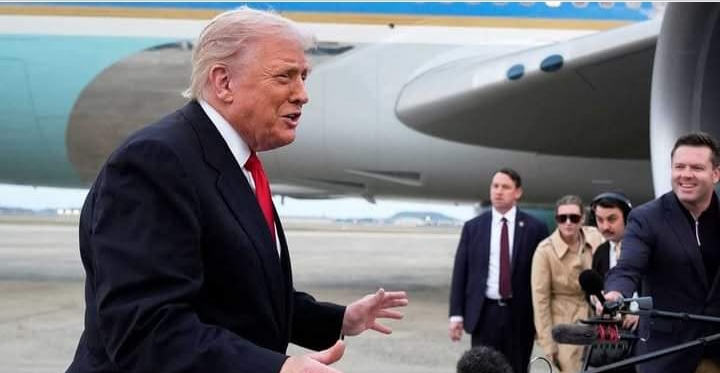NFL
President trump is floating $2,000 Tariff rebate checks. Here is what you need to know

Here’s how much could be available and why Congress and the Supreme Court could stand in the way of President Trump’s proposal for tariff rebate checks.
## What’s being proposed
* Trump posted on Truth Social that the U.S. will pay a “dividend of at least $2,000 a person (not including high income people!)” funded by revenue from tariffs imposed on imports. ([People.com][1])
* He claimed the U.S. is taking in “trillions of dollars” from tariffs and that after the payments “whatever is left over” would go toward reducing the national debt. ([TIME][2])
* The administration has not provided detailed eligibility rules (income cutoff, dependent status, timing) or the specific mechanism for delivering the payments. ([CBS News][3])
—
## What are the potential benefits (why he’s doing it)
* Politically it appeals to voters—especially low- and middle-income households—by promising direct cash relief.
* It positions his tariff policy as not just punitive on imports but beneficial to Americans (“dividing the gains”).
* It reinforces his narrative of using trade policy to fund domestic priorities rather than traditional taxes.
—
## Major questions and economic/policy concerns
### 1. **Is there enough tariff revenue?**
* Estimated recent tariff (customs duty) revenue: about US$195 billion for FY2025. ([CBS News][3])
* Sending $2,000 to say 150 million Americans would cost ~$300 billion (150 million × $2,000). ([Newsweek][4])
* That means the revenue wouldn’t cover the payout—leaving a shortfall or requiring other funding. ([Newsweek][4])
### 2. **Legality and who pays**
* The revenue comes primarily from tariffs (which may raise costs for U.S. consumers or importers). Some economists argue tariffs act like taxes on Americans, not foreigners. ([The Washington Post][5])
* A major legal case is before the Supreme Court of the United States about the authority under which the tariffs were imposed. If the tariff authority is struck down, refunds or adjustments may be required. ([CBS News][3])
### 3. **Inflation and economic dynamics**
* Giving large checks may boost consumer demand at a time when supply constraints exist, risking inflation. ([CNBC][6])
* Also, tariffs themselves raise import costs and can feed into consumer prices, so the rebate may partly offset earlier cost increases—but not fully. ([Newsweek][4])
### 4. **Budget and debt impact**
* Trump claims leftover money would go to debt reduction—but given the shortfall in revenue, it may actually increase deficits unless there are spending cuts or other offsets. ([The Washington Post][5])
### 5. **Implementation and timing**
* No legislation has been passed yet authorizing these payments. Congress must act. ([AP News][7])
* No clear timeline or mechanism published yet—so for now it remains a proposal, not a concrete plan.
—
## Bottom line
Trump’s proposal is bold and politically compelling: “We’ll tax imports, then hand you $2,000” is an attractive message. But on the policy side, it faces **significant realism gaps**: the revenue doesn’t appear sufficient, the legal basis is under challenge, economic side-effects (inflation, higher costs for consumers) are worrying, and the implementation path is unclear. Unless additional funding sources or spending/work offsets are found, such a plan could end up increasing deficits rather than paying them down.












